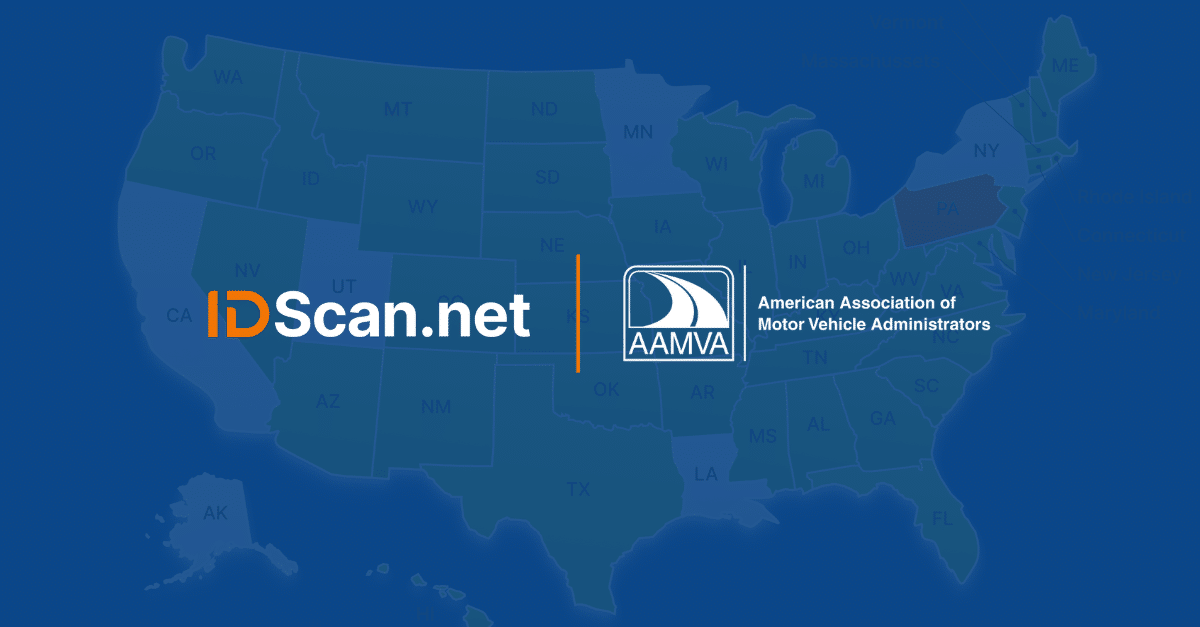2024 marked a key inflection point in mobile ID implementation, as well as legislation for future applications. Six new state mobile ID applications went live in 2024, with an additional ten states introducing legislation for the creation of their own digital ID programs. Several states also launched additional wallets to expand access to their residents. Google also announced plans to offer a digital passport through their mobile wallet.
Mobile drivers licenses (mDLs) and digital IDs are transforming the identity landscape not just for consumers, but also for businesses who accept identity documents. Here is a quick look back at the most significant announcements and developments related to mobile IDs this calendar year.
What is a mobile ID?
Mobile IDs, sometimes referred to as digital IDs, electronic IDs (e-IDs), or mobile drivers licenses (mDLs), are digital versions of a physical drivers license or identification card. They are issued by the jurisdiction’s document issuing authority (commonly the state DMV) and reside securely on a user’s mobile device.
To download a usable mobile ID, users must first have a physical identity document. They often must also receive a piece of mail at the address on their ID.
They then verify their identity by taking a front and back image of their physical ID, then performing a face match to ensure the live individual matches the ID photo. The jurisdiction then issues the mobile credential, which is installed on their phone and can only be accessed with a fingerprint or face ID. The ID lives inside a digital wallet, and can be opened and shared with businesses for age or identity verification.
Digital IDs function differently than their printed counterparts. All information is not visible on the screen, and is not shared visually, but instead by encrypted connections established via Bluetooth. For this reason, digital IDs and mobile IDs are considered extremely secure and much less fraud-prone than physical IDs.
Which states launched mobile IDs in 2024?
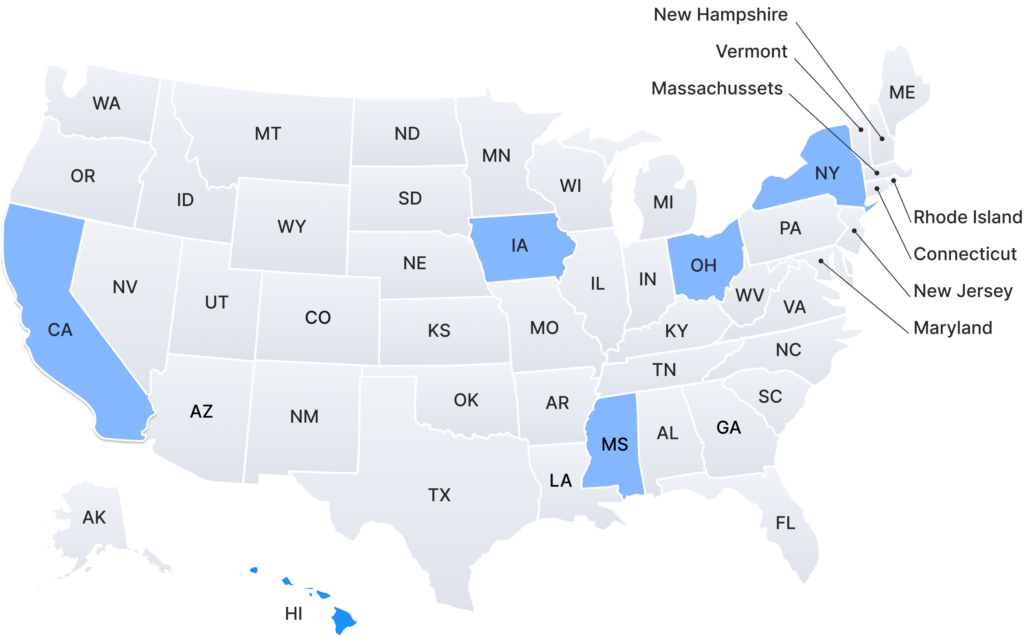
Four states joined Maryland, Georgia, Arizona, and Colorado by launching ID in Apple Wallet. These apps use NFC and Bluetooth to securely transmit data for mobile ID acceptance.
California – In September 2024, California launched a mobile ID in the Apple Wallet. Nearly 1,000,000 Californians are already using the mobile ID.
Hawaii – In August 2024, Hawaii launched a mobile ID in the Apple Wallet.
Iowa– In October 2024, Iowa launched a mobile ID in the Apple Wallet.. Iowa also has a state based app, Iowa mobile ID, that was launched in October 2023. While the number of residents that have downloaded the apple wallet version has yet to be announced, since it was only recently deployed, over 38,000 Iowans have downloaded the state powered app since last year.
Ohio – In July 2024, Ohio launched a mobile ID in the Apple Wallet. Within two days of launch, over 75,000 Ohio residents downloaded the mobile ID version.
Two states launched mID apps, which are powered by Idemia. These apps use a QR code to present data, which is then decrypted by a reader application.
Mississippi – In June 2024, Mississippi launched a state based app powered by Idemia. While the numbers vary based on source, its seems that over 50,000 Mississippi residents have already signed up for the Mississippi mobile ID.
New York – In August 2024, New York launched a state based app powered by Idemia. More than 100,000 New Yorkers have already downloaded the new mobile ID.
Which states had legislative movement related to their mobile ID programs in 2024?
Biometric Update has reported that eight states are projected to launch mobile IDs in 2025. Ten states saw legislative progress towards launch of their own programs.
Illinois – Unanimously passed in August 2024, the Illinois mobile ID is set to be available to the public sometime in 2025.
Florida – The state privately introduced an RFP for a rebuild of their mobile ID app. The state already has legislation in place to support the product.
Kansas – The state introduced legislation to create a mobile ID in February of 2024, but it has since died in the committee.
New Jersey – The bill was introduced to the New Jersey Senate in January 2024. While it is still in review, there are high hopes for a mobile app based on polling of locals.
New Mexico – The state signed a bill into law in February 2024 allowing for the production of an “electronic credential system.”
North Carolina – This bill was announced in 2023, and was signed into law in July 2024. The plan is to have a North Carolina mobile ID live by July 2025.
North Dakota – announced their hopes to have a mobile ID in 2025 for a $5 fee. This would be the first state to charge residents to use their mobile ID app.
Tennessee – The state introduced legislation to create a mobile ID in February of 2024, but it has since died in the chamber.
Washington – Officially proposed Dec. 28, 2023, but first House reading wasn’t until Jan 9, 2024. Currently in Senate review.
West Virginia – In January 2024, it was announced that West Virginia would launch a mobile ID in September 2024. As of November 1, 2024, the West Virginia mobile ID is still not live.
Wyoming – While the bill was originally passed in 2023, the state announced this year that the mobile ID would be launched in 2025.
Which states pulled or changed their mobile ID app in 2024?
Not every rollout has gone smoothly. Two states took steps to re-evaluate their mDL program in 2024.
Oklahoma’s mobile ID was pulled from app stores in 2024 due to lack of compliance with ADA regulations for those visually impaired individuals. It seems a new version of the app is under development that would provide more accessibility, but at this time, Oklahoma no longer has a legal mobile ID available.
Florida – Initially launched in 2022, the Florida mobile ID was unexpectedly pulled from app stores in June 2024. The Florida DOT stated they were revising the application, and a new version is expected to be released in 2025. It is speculated that the app was pulled due to low download rates by Floridians, with only 500,000 of the 18 million eligible residents downloading the mobile ID, and difficulty onboarding merchants to accept and read the digital credential.
How can businesses read and accept mobile IDs?
The largest challenge towards widespread use and adoption of mDLs isn’t on the consumer side, but on the business side. Businesses need technology to successfully read these digital documents.
IDscan.net has employed a couple different ways to ensure business continuity with ID scanning amongst the shift to mobile IDs.
IDScan.net and Apple
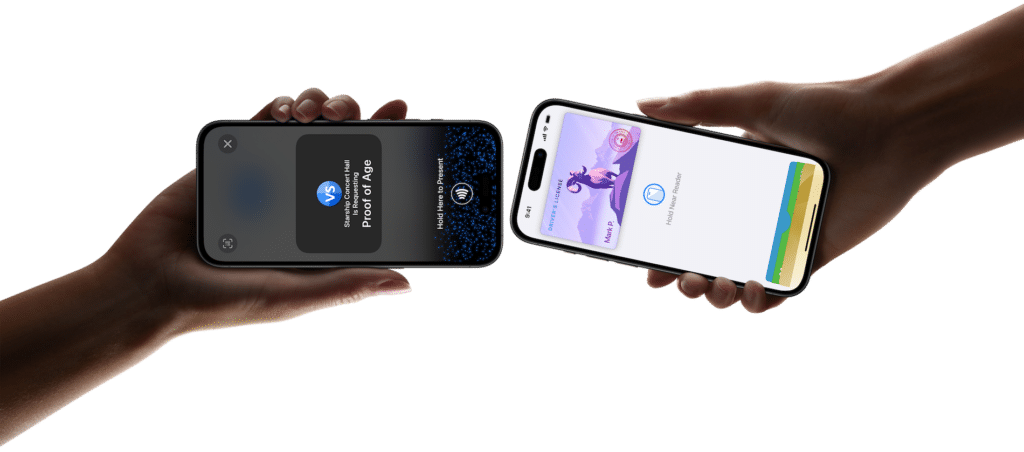
IDScan.net has integrated the VeriScan for iOS application with Apple to allow for NFC capable mobile ID scanning. This is done much like the process for Apple Pay. Once initiated inside the VeriScan app, both devices are then held near each other, and data is securely shared from the Apple Wallet version of mobile IDs from participating states – currently Arizona, California, Colorado, Georgia, Hawaii, Iowa, Maryland, and Ohio. The data can also be shared via a QR code that is generated from the consumer’s phone. The encrypted and secure method helps streamline processes for businesses while ensuring the same standard of age verification used by traditional handheld scanners.
IDScan.net and Credence ID
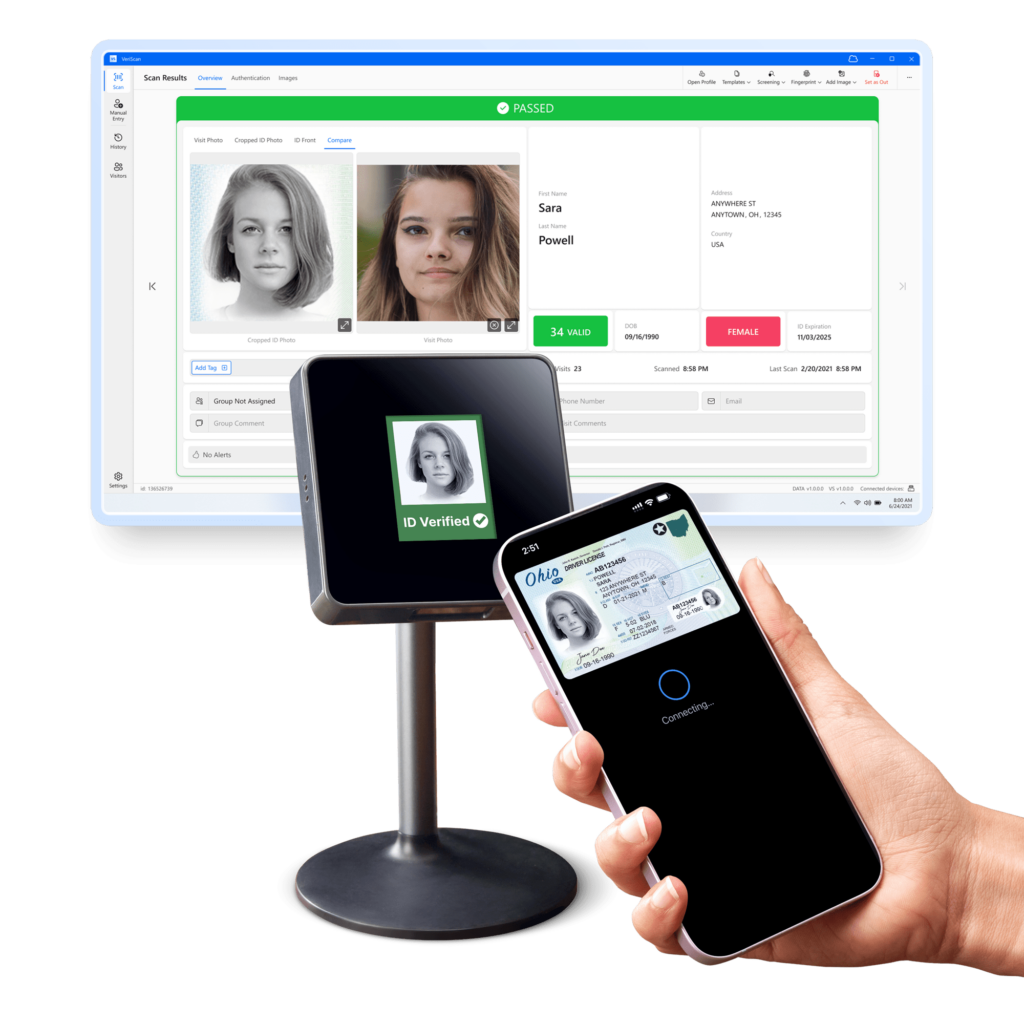
IDScan.net has also partnered with Credence ID and their Tap2ID mobile ID reader. The Tap2ID reader is wired directly to a computer, where it sends the results of the “scan” of each mobile driver’s license verification into the VeriScan for Windows platform. Tap2iDTM accepts mobile driver’s licenses issued by more than 14 states including California, New York, Maryland, Virginia, and others including the mDLs available through Apple, Samsung, and Google wallets. This new platform also accepts IDs presented using state-developed wallets or non-native applications. The Tap2ID mobile ID reader can act as a standalone solution if desired, but it can also be easily integrated into existing workstations and processes that businesses have in place.
Idemia powered applications
While Idemia makes state based digital ID applications in a growing number of states, the accuracy of reading mobile IDs varies. For participating TSA locations powered by Idemia and other Idemia powered applications, the process of reading mobile IDs is similar to VeriScan for iOS. The NFC capable reader is used by a business to verify a traveler or patron’s identity. The platform claims to ensure all scans are verified via DMV verification, but that requires a per scan cost for verification.
Single-purpose mobile apps
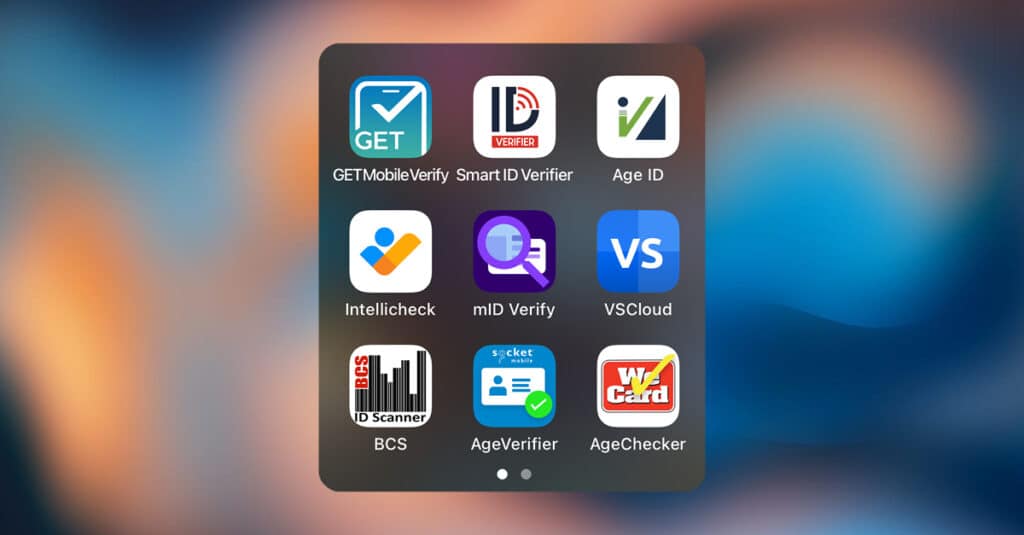
There are several single purpose mobile apps available for businesses to download, but after extensive testing with physical IDs, the confidence for most of these apps scanning digital ID with accurate results is low.
Vemos
Scannr
Bar & Club Stats
We Card
mID Verify
GETMobile Verify
IDScanner
Scandit
Show Me ID
Accepting digital IDs remotely
Mobile ID enthusiasts are likely very familiar with ISO-18013-5, which is the ISO protocol for accepting mobile IDs. In October 2024, a new protocol (ISO/IEC 30071-1) was released, governing how businesses can interface with mobile IDs for activities like remote onboarding, account opening, password recovery, etc. This process is meant to work similar to traditional digital identity verification, which commonly uses a front-back-selfie process to verify the ID and then match it to the individual.
Use of mobile IDs for remote ID validation and remote age verification could accelerate the de-anonymization of the internet because they allow for one-click verification that is tied to a pre-verified device, and a credential that requires biometrics (face ID or fingerprint) to unlock. This process has the potential to make it much harder for fraudsters to impersonate good customers, or use fake IDs to commit synthetic identity theft.
Non-US mobile ID progress
As of February 2024, 37 countries have implemented some form of digital ID. As most countries issue a national ID, or issue drivers licenses from a central authority (instead of 50+ states and territories), program implementation is much easier and compatibility is more straightforward.
Most applications seem to be linked to government services and/or healthcare, thus allowing easier access to essential businesses for residents. While the number of countries with mobile IDs may seem small, we expect to see the number continue to grow amongst advancing technology efforts.
The current countries with digital ID applications in place are:
Argentina
Australia
Austria
Belgium
Brazil
Chile
Colombia
Czech Republic
Denmark
France
Germany
Hong Kong
India
Indonesia
Ireland
Israel
Italy
Japan
Malaysia
Netherlands
Nigeria
Norway
Pakistan
Peru
Philippines
Poland
Portugal
Romania
Saudi Arabia
Singapore
Spain
Sweden
Switzerland
Thailand
Turkey
United Arab Emirates (UAE)
United States – State specific applications
Vietnam
Conclusion
As technology continues to evolve, businesses must adapt. Employing the ability to read mobile IDs ensures business continuity while also ensuring businesses remain compliant with state and federal laws. With 6 new mobile IDs implemented in 2024 and another 10, at least, expected in 2025, the time to prepare your business for this shift is now.



